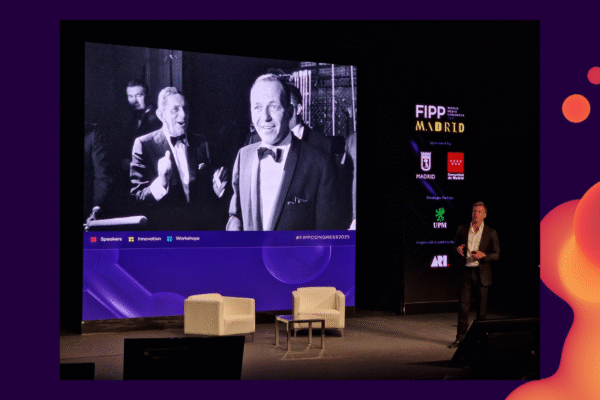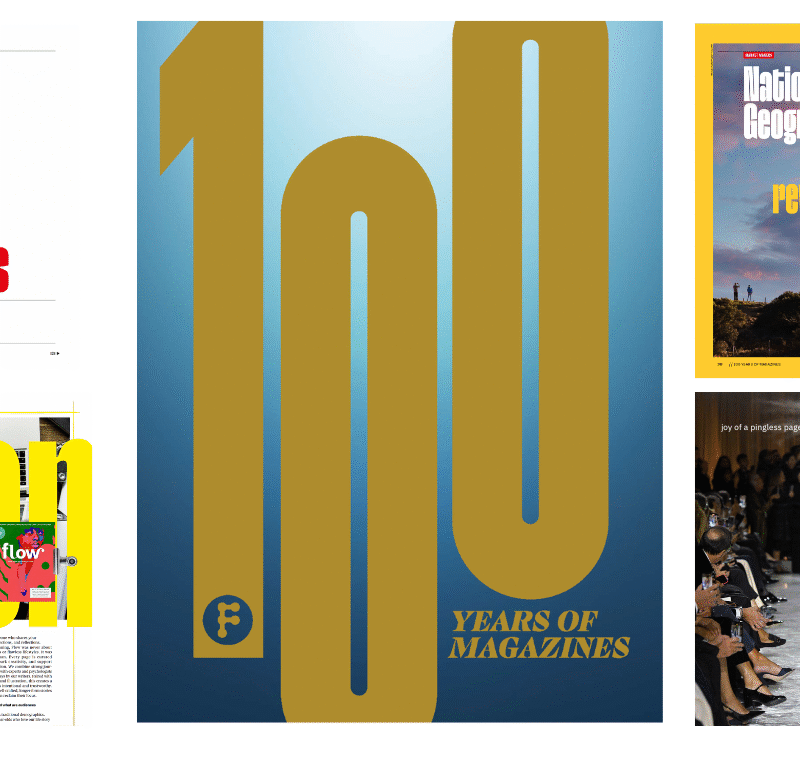Hearst’s playbook for navigating a new reality
From Frank Sinatra to first-party data: Hearst’s Joe Martin told FIPP World Media Congress delegates how timeless storytelling, trust and partnerships will drive the brand’s success in the next era of media.
Hearst Magazines International’s VP, Media Licensing Sales Joe Martin opened his session at FIPP Congress with a reminder of the enduring quality of good storytelling. Recalling the legendary story of Gay Talese’s 1966 Esquire profile, ‘Frank Sinatra Has a Cold’, Joe described how journalist Gay Talese, denied access to Sinatra himself, interviewed over 100 people within the singer’s inner circle, and produced a piece “still considered one of the greatest examples of profile writing ever told”.
“It was rigorous, faithful to the facts, and had a vivid level of storytelling that was only previously known in works of fiction,” he said. “It ended up becoming something bigger than just a story about Frank Sinatra. It also told a story about the industry, about celebrity, and about America itself.”
The anecdote served as a reminder to the room of what great journalism looks like, and to show how easily it can be lost in an age of automation. “You could open up ChatGPT and ask it to write you a 10,000-word profile on Frank Sinatra,” he said. “It would pull from every source that’s ever graced the internet. But is it going to be something that’s truly original? Is it going to resonate with people? Probably not.”
Search transformed
Joe explained how Hearst is responding to two parallel shifts: how audiences discover content, and how that content is increasingly being produced.
“The way people are discovering content is changing – the prevalence of AI, large language models, AI-generated summaries, and the decline in search traffic,” he said. “At the same time, AI-generated content itself is exploding.”
Citing Axios data, he noted that “last year, AI-generated websites increased by about 700%” and that “50% of all article content ever produced online has now been produced by AI.”
As a result, consumer trust remains fragile. “Surveys show that trust in an article drops by 50% when someone just perceives it to be generated by AI,” Joe said. “That perception also flows through to advertising… purchase intent drops by 14% for ads placed next to content people perceive to be written by AI.”
He stated that in an information environment flooded with indistinguishable material, trust and brand recognition have renewed commercial value. “Being a trusted brand that people know is more of an asset than ever before,” he said.
Multi-channel relationships
Search, Joe stressed, remains part of Hearst’s strategy – “we need to continually build awareness for our brands” – but reliance on external platforms is no longer viable. “Building a business model that’s reliant on a partner can be an unreliable long-term strategy.”
For years, he noted, digital publishing followed a familiar pattern: “For a long time, we were able to produce a lot of content, distribute it through Google and Facebook, and then monetise it through programmatic ads. Obviously, that’s becoming more difficult.”
Hearst’s response has been “doubling down on building direct relationships with readers and advertisers,” focusing on engagement across every channel, from digital products to live events and membership models.
Building new value
Joe outlined how the company’s portfolio now extends far beyond traditional publishing. “We’re continually building what we can offer through membership programmes that give additional value to readers,” he said.
Examples include Good Housekeeping events, the Cosmopolitan Club, and Harper’s Bazaar Privé, an exclusive membership concept in London “where women are paying between £1,000 and £10,000 a year for access to events at venues such as The Goring Hotel.” The model has been so successful that it has been replicated in the Netherlands.
Hearst’s enthusiast titles have also translated brand loyalty into experience. Runner’s World now hosts pre-marathon events and run clubs; its ‘Shake-Out’ partnership with Samsung around the London Marathon exemplifies how editorial identity can drive both engagement and commercial collaboration.
Beyond the direct revenue of subscriptions, Joe emphasised the value of first-party data. “The more we know about a customer, the better we can serve them in terms of experiences, commerce and advertising,” he said. In Japan, for instance, early-access privileges for e-commerce customers have increased order value by 7%.
Optimising digital
Engagement also depends on experience. “We can produce some of the best content available,” Joe said, “but if we have a bad experience, people are not going to stick around.”
Hearst’s teams have therefore prioritised technical excellence – page-load speed, metadata, and canonical structures that avoid competing URLs. “We’ve actually created SEO checklists and a playbook for best practices that we’re rolling out to our international offices and our network of licensees,” he said. “Despite the talk of declines, we’re actually up year-on-year in traffic across our international brands.”
This playbook, Joe said, originated in Hearst Spain, whose success inspired global adoption.
Global consistency, local strength
Hearst’s international network now includes around 200 editions in 50 markets, supported by central teams for brand management and editorial alignment. “The key to the international business that’s made it successful is really leaning into local,” he said. “It’s finding great editors in each of these markets who understand their audience, and localising it to them.”
Not every initiative succeeds, Joe admitted, but agility and shared learning have become built-in strengths. Recent expansions include Harper’s Bazaar in Ecuador and new Esquire launches in Colombia, Brazil, India and Vietnam, all following a “repeatable, scalable model of leaning into what the brands represent, what made people fall in love with them in the beginning, focusing on the audience and engagement.”
One striking example of that approach is Harper’s Bazaar France, launched three years ago in an already crowded market. “It was a print-first product when people thought that wouldn’t succeed,” Joe said. “But they made it very French, produced excellent content, and it has now become a market leader.”
Heritage as advantage
Joe closed where he began – with optimism grounded in legacy. “We have a lot of brands. Some of those brands are old enough that they survived world wars and, of course, the birth of the internet,” he said. “And we truly believe that by working with the right international partners, and leaning into what made these brands special in the beginning, they’ll continue to thrive throughout the next iteration of the information landscape.”







